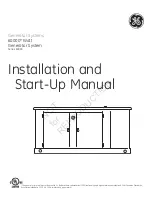
DGA-6000 ULTRA-HD VIDEO GENERATOR / ANALYZER USER MANUAL
A-2
Serial Protocol
The USB port emulates an RS-232 connection, so the computer (controller) must be set to the proper
Com Port protocols when using the USB port. The computer should be set to 8 bits, no parity, and 1
stop bit. It must also be set to match the DGA-6000 baud rate, which can be selected from 9600 baud
to 230.4K baud in the OSD menu. DTS/RTS, Xon/Xoff, or no flow control can be selected for the USB
port.
Note: It is often easier to start with a slow baud rate (e.g. 19200 baud) and no flow control when
initially setting up a connection. The higher baud rates of the DGA-6000 are primarily for use when
adding new features through firmware updates. Slower baud rates (e.g. 19200 or 9600 baud) are
perfectly adequate in normal use.
AccuPel DVG-5000/HDG-4000/HDG-3000 Compatibility
Programs previously written for the AccuPel DVG-5000, HDG-4000 or HDG-3000 Video Generators
will work with all features that are common to the DGA-6000.
DGA-6000 Command Syntax
The DGA-6000 accepts ASCII text commands. Each command is 2 to 12 characters in length and
must be followed by a carriage return (CR) character (ASCII 13). You may not send multiple
commands with a single CR. Partial command strings are not valid.
Capital and non-capital characters are accepted, i.e. a = A, B= b.
All spaces and line feed (LF) characters are ignored.
Confirmation and Error Messages
The DGA-6000 will return “OK” (without quotes), followed by CRLF (ASCII 13, ASCII 10), after
executing each valid serial interface command.
If the DGA-6000 receives an unrecognized character string of 12 characters or less it will return “ER “
followed by the unrecognized character string, followed by CRLF. If more than 12 characters are
received only the first 12 chars are returned in the error message, and the remaining characters are
discarded.
Query Commands
Query commands end with a question mark (?). Query commands return one or more text strings (64
characters maximum), each followed by a CRLF. “OK” followed by CRLF will be returned after the
last text string.
To avoid a possible buffer overrun when sending multiple Query commands, wait for the “OK”
response before sending the next Query command.
















































